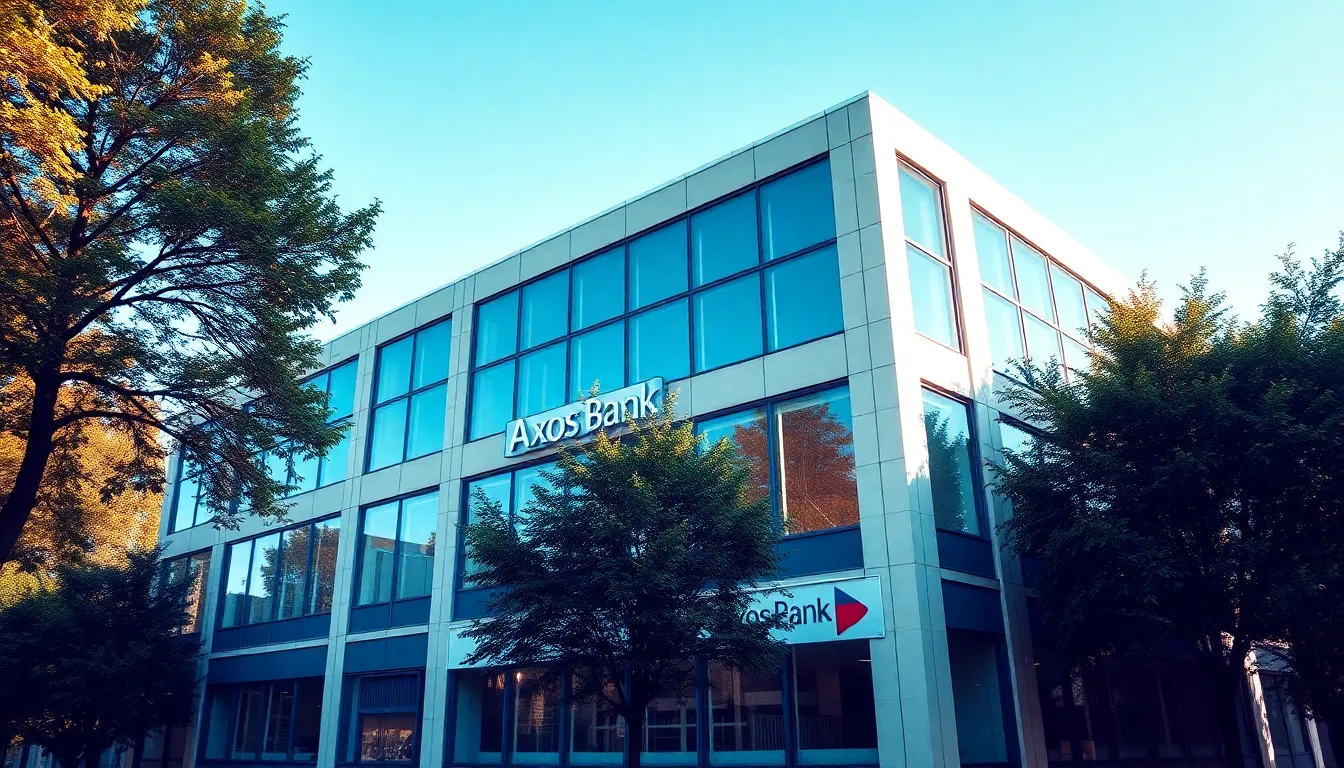Table of Contents
ToggleIn the world of banking, it’s not uncommon for institutions to face a few bumps in the road. But when whispers about Axos Bank’s stability start to circulate, it raises eyebrows and heart rates alike. Is this digital bank on the brink of a meltdown, or is it just another case of financial gossip gone wild?
With a reputation for innovation and customer service, Axos has carved out a niche in the banking landscape. However, recent events have left many wondering if it’s time to hit the panic button or just sit back and sip some coffee. Let’s dive into the facts and see if Axos Bank is really in trouble or if it’s just another day in the unpredictable world of finance.
Overview of Axos Bank
Axos Bank operates as a digital banking institution recognized for innovative services and strong customer support. Founded in 2000, it quickly transitioned to an online-only model, minimizing traditional banking costs. This move attracted a diverse customer base seeking accessibility and convenience.
One notable feature of Axos Bank is the range of accounts offered, including high-yield savings and checking options. Such products generally appeal to consumers looking for competitive interest rates and low fees. The bank also emphasizes technology-driven solutions, enhancing user experience through mobile apps and digital interfaces.
Regulatory measures and financial health play a crucial role in assessing Axos Bank’s stability. Recent evaluations of its assets and liabilities indicate sound management principles. Its focus on risk assessment generally positions the bank favorably in a fluctuating market.
Concerns about Axos Bank’s stability arise from broader economic uncertainty affecting the banking sector. Analysts categorize recent trends in customer deposits, loan growth, and financial performance to analyze its current standing. The bank’s commitment to transparency helps mitigate fears surrounding its potential vulnerabilities.
Often, customer feedback highlights the quality of service as a key differentiator. Reviews typically praise fast response times and personalized support, aspects that are essential in maintaining customer loyalty. Such positive interactions contribute to Axos Bank’s reputation as a trustworthy financial institution.
Current Financial Status

Axos Bank’s financial health is under scrutiny as analysts assess its current standing amid economic uncertainty. Recent data provides insights into the bank’s performance and stability.
Recent Financial Reports
Quarterly financial reports reveal steady growth in Axos Bank’s earnings. Revenue reached $150 million in Q3 2023, reflecting a 10% increase year-over-year. Net income stood at $30 million, showing resilience despite market fluctuations. Non-performing assets remain less than 1% of total assets, indicating effective risk management. These reports demonstrate the bank’s capability to sustain operations even during challenging economic times.
Key Performance Metrics
Deposits experienced significant growth, with a 15% increase in customer deposits reported in the last quarter. Loan origination also saw an uptick, with nearly $400 million in new loans issued. The bank’s return on assets (ROA) sits at 1.2%, above the industry average. Customer satisfaction ratings consistently remain high, reflecting ongoing commitment to service quality. These metrics underscore Axos Bank’s strategic positioning in a competitive digital market.
Factors Contributing to Potential Trouble
Several factors contribute to the potential concerns surrounding Axos Bank’s stability. Economic conditions and regulatory frameworks play significant roles in shaping the financial landscape for this institution.
Economic Climate
Economic instability influences Axos Bank’s performance. Recent inflationary trends and rising interest rates create uncertainty in consumer behavior. With customers reassessing their spending and savings patterns, deposit growth may slow down. Analysts note a cautious approach from consumers which might impact loan demand. Additionally, fluctuations in the stock market can affect investor confidence, further complicating the bank’s position. The overall economic environment remains a critical factor in determining Axos Bank’s resilience.
Regulatory Challenges
Regulatory pressures add another layer of complexity for Axos Bank. Financial institutions face increased scrutiny from bodies like the FDIC and OCC. Recent amendments to banking regulations demand stricter compliance, possibly straining operational resources. Furthermore, any potential changes in laws regarding digital banking could impose additional requirements. Keeping pace with regulatory expectations presents a constant challenge. The bank’s ability to navigate these complexities will significantly influence its stability moving forward.
Industry Comparison
Axos Bank’s performance is best understood in the context of its competitors and prevailing market trends. Analyzing both offers valuable insights into its stability.
Competitors Overview
Several digital banks compete with Axos Bank, including Ally Bank, Chime, and Marcus. Each institution provides unique features and services aimed at attracting tech-savvy consumers. Ally Bank offers competitive high-yield savings rates, while Chime focuses on fee-free banking. Metrics show that Marcus emphasizes its fixed-rate savings products, appealing to a different segment. Axos Bank differentiates itself with a wider array of account options and rewards programs, thus appealing to a diverse clientele.
Market Trends
Market trends significantly impact Axos Bank’s stability. Current economic conditions reveal rising interest rates affect consumer borrowing behavior. Observations indicate slow growth in loan demand, which may influence financial performance. Digital banking expansion plays a crucial role, with consumer preferences shifting towards online-only institutions. Increased competition compounds the challenge of attracting new customers. Trends also suggest a growing preference for innovative banking solutions, pushing Axos Bank to enhance its technological offerings. Understanding these dynamics provides context for evaluating Axos Bank’s position among industry players.
Customer Sentiment
Customer sentiment regarding Axos Bank reveals a mix of satisfaction and concern. While many users appreciate the convenience and competitive interest rates, some express worries about the bank’s stability.
Customer Reviews and Feedback
Positive customer reviews frequently highlight the efficient digital platform and strong customer service. Users often mention quick response times and the availability of diverse account options. However, certain reviews voice apprehensions about the bank’s financial health amid economic instability. A few customers reference attempts to reach customer support during high-volume periods, noting delays. Overall, customer sentiment largely skews positive, yet some remain vigilant about the bank’s future.
Social Media Analysis
Social media platforms showcase varied sentiments towards Axos Bank. Conversations on Twitter reflect a mix of praise for its user-friendly mobile app and concern over recent economic uncertainties. Posts frequently highlight the bank’s responsive customer service, yet discussions reveal apprehension about navigating changing market conditions. Analysts observe a growing number of users seeking updates on financial performance. Engagement metrics indicate that Axos Bank’s social media presence remains strong, indicating active customer interest despite underlying trepidations.
Axos Bank’s future hinges on its ability to navigate current economic challenges and maintain customer trust. While financial metrics indicate a solid performance, the broader market uncertainties and regulatory pressures pose potential risks. Customer sentiment remains largely positive but is tinged with caution. As the digital banking landscape evolves, Axos Bank must continue to innovate and adapt to sustain its competitive edge. The coming months will be crucial in determining whether the bank can reassure both customers and investors of its stability in an unpredictable environment.







